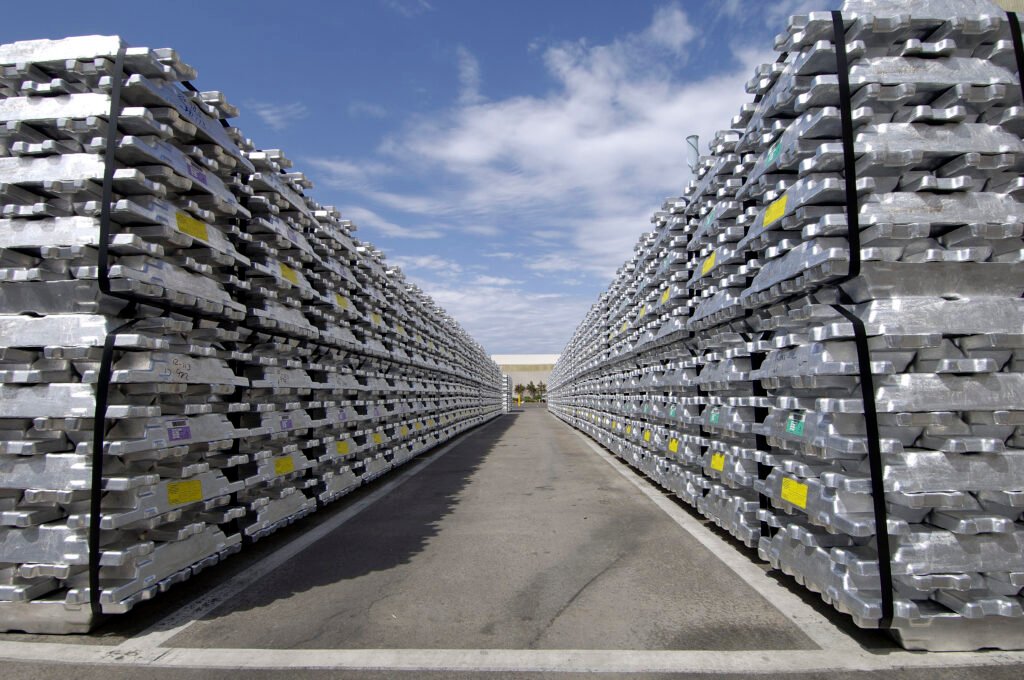There are various methods for processing aluminum, allowing for the production of different shapes and performance characteristics based on specific needs. Below are some common aluminum processing methods:
1. Extrusion Processing
Extrusion is one of the most common forming methods for aluminum. By heating an aluminum billet and using high pressure to push it through a die of a specific shape, aluminum profiles are formed. This method is often used to produce aluminum alloy profiles, such as window frames, doors, and curtain walls in construction.
Advantages:
- Can produce profiles with complex cross-sections
- Efficient and relatively low cost
- High dimensional accuracy and good surface quality
2. Rolling Processing
Rolling involves passing aluminum ingots through rotating rollers to reduce their thickness, with processes divided into hot rolling and cold rolling. Hot rolling is used to produce thick and medium plates, while cold rolling is used to produce thin sheets and aluminum foil.
Advantages:
- Capable of producing large sheets
- Uniform strength and toughness
- High surface smoothness
3. Forging Processing
Forging applies external force to deform aluminum in a die to form parts of specific shapes. Forged parts typically have high strength and excellent mechanical properties, widely used in components that require high strength and load-bearing capacity, such as automotive and aerospace parts.
Advantages:
- High product strength
- Good material density, suitable for high-stress components
4. Stretching Processing
Stretching fixes aluminum sheets on a die and mechanically stretches them to form complex surfaces. This process is often used to produce covering parts for airplanes and automobiles.
Advantages:
- Suitable for producing large, complex-shaped parts
- Achieves good surface smoothness
5. Stamping Processing
Stamping uses a punch and die to press aluminum sheets into specific shapes. This method is commonly used for manufacturing small, complex parts in large quantities, such as automotive bodies and home appliance casings.
Advantages:
- Suitable for mass production
- Low cost and high efficiency
6. Welding Processing
Welding joins aluminum parts through heat or pressure. Common aluminum welding methods include argon arc welding and friction stir welding. Welding is often used for connecting multiple aluminum parts in structures such as frames and supports.
Advantages:
- Enables the connection of complex structural components
- High strength and precision
7. Machining
Machining includes turning, milling, drilling, and planing, used to precisely process aluminum into high-precision parts. This method is often used in aerospace, electronics, and mechanical fields that require high precision and surface quality.
Advantages:
- Suitable for manufacturing precision parts
- Can achieve complex shapes
8. Surface Treatment
Surface treatment is used to enhance the corrosion resistance, aesthetics, and lifespan of aluminum. Common surface treatments include anodizing, electrophoresis coating, spraying, and electroplating. These methods provide aluminum with various aesthetic effects and additional protection.
Advantages:
- Improves corrosion resistance
- Enhances appearance and decorative appeal
9. Casting Processing
Casting involves pouring molten aluminum into molds and allowing it to cool and solidify. It is suitable for producing complex-shaped parts that require material density. Common casting methods include sand casting and die casting.
Advantages:
- Suitable for producing large, complex-shaped parts
- Forms in one step, saving processing steps
Conclusion
Aluminum processing methods cover multiple stages from forming to surface treatment. Each method has its unique advantages and application scenarios. Choosing the appropriate processing method based on the specific requirements and applications of the product can optimize production efficiency, reduce costs, and improve product performance.
Shanghai Slink Technology is dedicated to providing customers with one-stop aluminum services. We sincerely welcome all esteemed guests to collaborate with us in jointly developing aluminum applications and markets.

